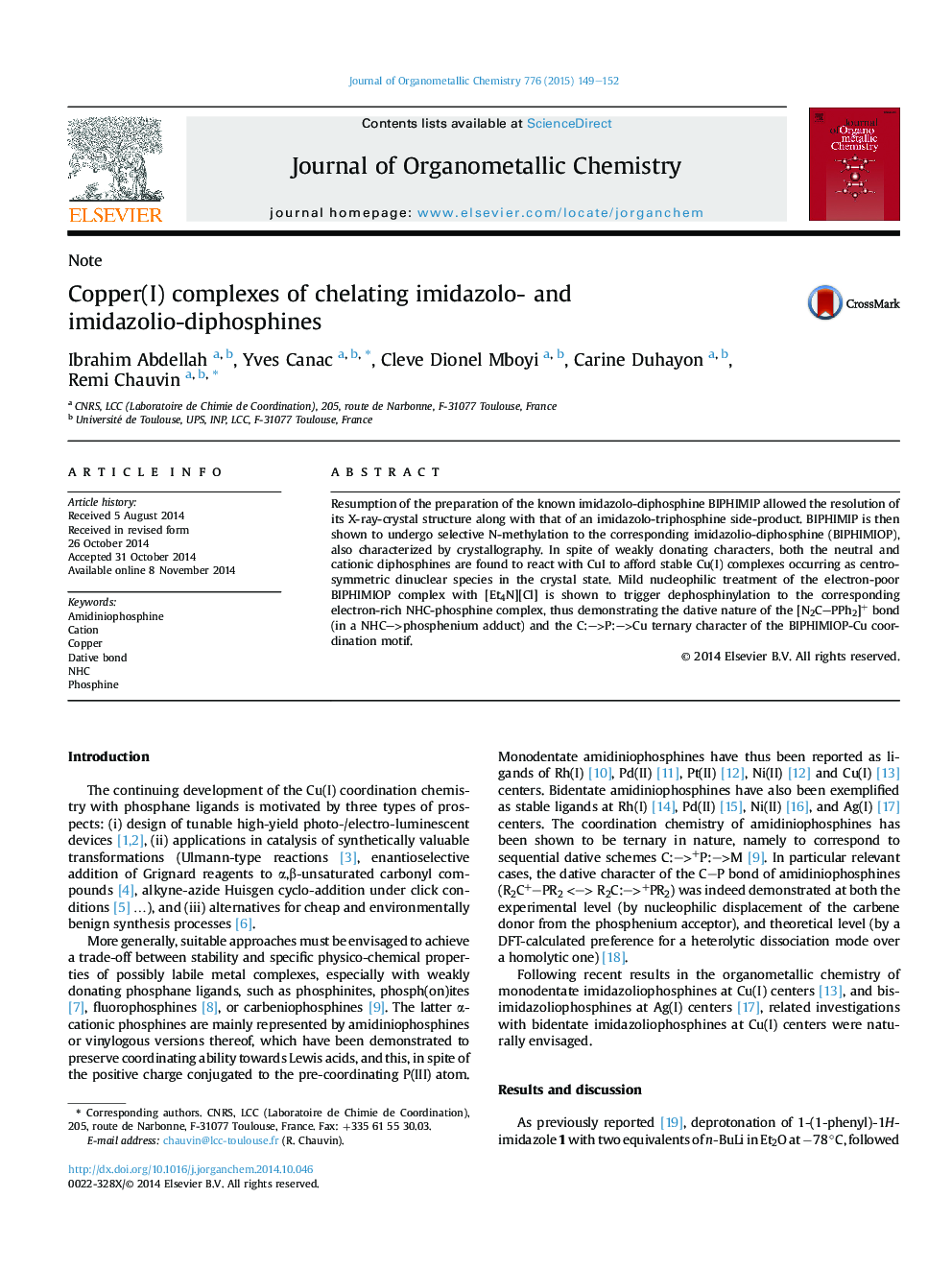| Article ID | Journal | Published Year | Pages | File Type |
|---|---|---|---|---|
| 1322182 | Journal of Organometallic Chemistry | 2015 | 4 Pages |
Resumption of the preparation of the known imidazolo-diphosphine BIPHIMIP allowed the resolution of its X-ray-crystal structure along with that of an imidazolo-triphosphine side-product. BIPHIMIP is then shown to undergo selective N-methylation to the corresponding imidazolio-diphosphine (BIPHIMIOP), also characterized by crystallography. In spite of weakly donating characters, both the neutral and cationic diphosphines are found to react with CuI to afford stable Cu(I) complexes occurring as centro-symmetric dinuclear species in the crystal state. Mild nucleophilic treatment of the electron-poor BIPHIMIOP complex with [Et4N][Cl] is shown to trigger dephosphinylation to the corresponding electron-rich NHC-phosphine complex, thus demonstrating the dative nature of the [N2C–PPh2]+ bond (in a NHC–>phosphenium adduct) and the C:–>P:–>Cu ternary character of the BIPHIMIOP-Cu coordination motif.
Graphical abstractChelation of Cu(I) centers by the electron-poor neutral BIPHIMIP and cationic BIPHIMIOP diphosphines is described, and the dicationic complex is shown to undergo dephosphinylation to the corresponding neutral electron-rich NHC-phosphine complex.Figure optionsDownload full-size imageDownload as PowerPoint slide
